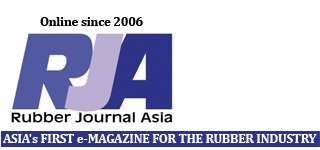 WITH an annual growth rate of 10%, “green tyres” are the fastest growing in the market. This is prompting companies like German chemicals supplier Lanxess to focus on synthetic rubber offerings, as pointed out by its participation in the recent Tire Technology Expo, where it introduced several concepts.
WITH an annual growth rate of 10%, “green tyres” are the fastest growing in the market. This is prompting companies like German chemicals supplier Lanxess to focus on synthetic rubber offerings, as pointed out by its participation in the recent Tire Technology Expo, where it introduced several concepts.
The company focused on advancements in the field of butyl and styrene-polybutadiene rubber, the development of new grades for winter treads using the nano-additive Nanoprene, functionalised styrenebutadiene rubber products for “green tyres” and process improvements with modified neodymiumpolybutadiene rubber (Nd-PBR) at the German show.
In technical presentations, Heike Kloppenburg, head of Product and Process Development in the Performance Butadiene Rubbers business unit (BU PBR), spoke about modifying Nd-PBR for easy rubber processing, explaining how classical conflicts between processability and tyre properties can be resolved using modified
Nd-PBR.
Meanwhile, Fernanda Albino from the PBR business unit described how rolling resistance can be improved with
both functionalised styrene-butadiene rubber and SSBR grades with a variable vinyl and styrene content.
Functionalised SSBR rubber products also were the main topic of a presentation by David Hardy, Technical
Marketing Manager, PBR business unit. “These products have the potential to deliver the rolling resistance
and wet grip properties typical of silica, without the expensive silane additives. This also would reduce the
number of blending steps – when using innovative SSBR rubber grades with suitable functional groups across
the entire polymer molecule,” he said.
Dietmar Hoff from Marketing and Sales of Release Agents and Bladders at Lanxess subsidiary Rhein Chemie,
explained in his paper on “High Performance Curing Bladders” how the application of expertise in rubber and manufacturing technology combined with the targeted use of highly effective release agents can increase
bladder service life, while at the same time reducing vulcanisation time and increasing surface quality, which
ultimately reduces reject rates. Lanxess’s focus on the sector is reflected in its investments. It has significantly expanded production capacities for Nd-PBR at three locations worldwide; another facility is in the
planning for Singapore and scheduled to start production in 2015. With an investment volume of some EUR200
million, it is the secondlargest project of its kind since company inception.
The company also made the largest single investment its history, totalling EUR400 million, in a butyl rubber plant at the same location, which is to begin operation in 2013.
Work is underway at the Triunfo site in Brazil to convert production to SSBR for use in green tyres. The final decision on the investment, estimated at well over EUR10 million, is to be made in mid-2012. At present, Lanxess already produces these rubber grades in the US, Brazil and in France.(PRA)
